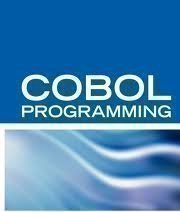COBOL
COBOL is a third generation programming language (3GL), is also one of the oldest programming languages that is still in use today. COBOL is an acronym that stands for Common Business-Oriented Language. Its primary use is in the fields of business, finance, and administrative systems for various companies and governments. It also is responsible for some of the back end computing behind online financial transaction and payroll services.
The idea, COBOL, was formulated by the Short Range Committee, an assortment of computer manufacturer and government agency officials, as a solution for a short range look at common business language. It was developed by an association of computer scientists named the Conference on Data Systems Languages (CODASYL) in 1959. Since its conception, like every programming language, COBOL has received several revisions, and gone through several forms: COBOL 60, (ANS) COBOL-68, (ANS) COBOL-74, (ANS) COBOL-85, and (ANS) COBOL 2002.
COBOL is meant to be easily understood by the average computer user. Its syntax is very mundane and the concept behind each program is fairly easy to grasp. Take this example code for instance, a simple HELLO, WORLD program.
IDENTIFICATION DIVISION.
PROGRAM-ID. HELLO-WORLD.
PROCEDURE DIVISION.
PARAGRAPH-1.
DISPLAY 'Hello, world.'.
STOP RUN.
Many skeptic computer programmers shy away from the use of COBOL, often throwing remarks like: “The use of COBOL cripples the mind; its teaching should, therefore, be regarded as a criminal offense” (Edsger Dijkstra) at COBOL programmers and supporters. But its practitioners just say that critics have never programmed COBOL and often foolishly misrepresent it.


Comments - No Responses to “COBOL”
Sorry but comments are closed at this time.